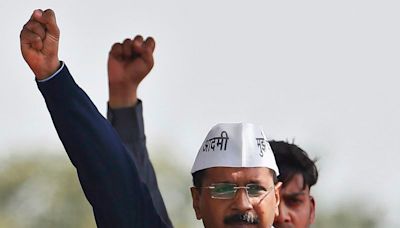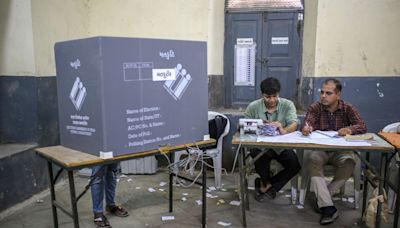Search results
India, officially the Republic of India ( ISO: Bhārat Gaṇarājya ), [21] is a country in South Asia. It is the seventh-largest country by area; the most populous country as of June 2023; [22] [23] and from the time of its independence in 1947, the world's most populous democracy.
- dd-mm-yyyy
- Overview
- Land
- Relief
India shares borders with Pakistan to the northwest; with Nepal, China, and Bhutan to the north; and with Myanmar and Bangladesh to the east. The island country of Sri Lanka is situated some 40 miles (65 kilometres) off the southeast coast of India.
What are the oldest known civilizations of India?
The expansive alluvial plains of the Indus and Ganges (Ganga) river basins in India provided the environment and focus for the rise of two great phases of city life: the civilization of the Indus valley, known as the Indus civilization, during the 3rd millennium BCE; and, during the 1st millennium BCE, that of the Ganges.
What are the major holidays and festivals of India?
The major secular holidays are Independence Day (August 15) and Republic Day (January 26). The most popular religious festivals celebrated over the greater part of India are Vasantpanchami, in honour of Sarasvati, the goddess of learning; Holi, a time when traditional hierarchical relationships are forgotten and celebrants throw coloured water and powder at one another; Dussehra, when the story of the Ramayana is reenacted, and Diwali (Divali), a time for lighting lamps and exchanging gifts.
India, country that occupies the greater part of South Asia. India is made up of 28 states and eight union territories, and its national capital is New Delhi, built in the 20th century just south of the historic hub of Old Delhi to serve as India’s administrative centre. Its government is a constitutional republic that represents a highly diverse population consisting of thousands of ethnic groups and hundreds of languages. India became the world’s most populous country in 2023, according to estimates by the United Nations.
India’s frontier, which is roughly one-third coastline, abuts six countries. It is bounded to the northwest by Pakistan, to the north by Nepal, China, and Bhutan; and to the east by Myanmar (Burma). Bangladesh to the east is surrounded by India to the north, east, and west. The island country of Sri Lanka is situated some 40 miles (65 km) off the southeast coast of India across the Palk Strait and Gulf of Mannar.
The land of India—together with Bangladesh and most of Pakistan—forms a well-defined subcontinent, set off from the rest of Asia by the imposing northern mountain rampart of the Himalayas and by adjoining mountain ranges to the west and east. In area, India ranks as the seventh largest country in the world.
It is now generally accepted that India’s geographic position, continental outline, and basic geologic structure resulted from a process of plate tectonics—the shifting of enormous, rigid crustal plates over the Earth’s underlying layer of molten material. India’s landmass, which forms the northwestern portion of the Indian-Australian Plate, began to drift slowly northward toward the much larger Eurasian Plate several hundred million years ago (after the former broke away from the ancient southern-hemispheric supercontinent known as Gondwana, or Gondwanaland). When the two finally collided (approximately 50 million years ago), the northern edge of the Indian-Australian Plate was thrust under the Eurasian Plate at a low angle. The collision reduced the speed of the oncoming plate, but the underthrusting, or subduction, of the plate has continued into contemporary times.
The effects of the collision and continued subduction are numerous and extremely complicated. An important consequence, however, was the slicing off of crustal rock from the top of the underthrusting plate. Those slices were thrown back onto the northern edge of the Indian landmass and came to form much of the Himalayan mountain system. The new mountains—together with vast amounts of sediment eroded from them—were so heavy that the Indian-Australian Plate just south of the range was forced downward, creating a zone of crustal subsidence. Continued rapid erosion of the Himalayas added to the sediment accumulation, which was subsequently carried by mountain streams to fill the subsidence zone and cause it to sink more.
- Agra, Uttar Pradesh. Best for romantics and fans of Mughal history. At the top of everyone’s bucket list, the Taj Mahal is as glorious as people imagine it would be – a magnificent monument to lost love, executed in pearl-white marble.
- Varanasi, Uttar Pradesh. Best for intense spirituality. There are few places as beguiling and bewitching as the sacred Hindu city of Varanasi. Millennia-old death rituals play out daily at the cremation ghats that line the bank of the sacred River Ganges, while the maze-like alleyways of the nearby old town reveal dizzying surprises at every turn.
- Mumbai, Maharashtra. Best for urban explorers and Bollywood hopefuls. Mumbai is the perfect place to take the pulse of modern India. The most densely populated city in the subcontinent is home to Bollywood film stars, enterprising market vendors, bankers and executives rushing to work in offices, and fishing families who can trace their origins back to the days when this mighty metropolis was just a humble village.
- Ladakh. Best for an extraordinary taste of Tibet. In the far northwest of India, sheltered from the monsoon by the rain shadow of the Himalayas, the former Buddhist kingdom of Ladakh is culturally and geographically closer to western Tibet than anywhere in India.
India is a peninsula, which means that it is surrounded on three sides by water. In the west is the Arabian Sea, in the south is the Indian Ocean, and in the east is the Bay of Bengal. The coastline of India is of about 7,517 km (4,671 mi) long. [30] The northern part of India has many mountains.
India, officially the Republic of India, is a country in South Asia. It is the seventh-largest country by area; the most populous country as of June 2023; and from the time of its independence in 1947, the world's most populous democracy. Bounded by the Indian Ocean on the south, the Arabian Sea on the southwest, and the Bay of Bengal on the southeast, it shares land borders with Pakistan to ...
India's economy: The good, bad and ugly in six charts. India has one of the world's fastest growing economies but the benefits are yet to fully reach the poorest. 30 Apr 2024 India.
Purchase our award-winning guidebooks. Get to the heart of India with one of our in-depth, award-winning guidebooks, covering maps, itineraries, and expert guidance. Shop Our Guidebooks. 06 / Go Beyond.





